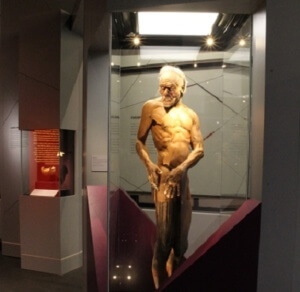 Human remains dating back millions of years will be on show to the public at London’s Natural History Museum in display cases featuring the latest in protective and anti-reflective glass technology, supplied by specialist manufacturer Romag.
Human remains dating back millions of years will be on show to the public at London’s Natural History Museum in display cases featuring the latest in protective and anti-reflective glass technology, supplied by specialist manufacturer Romag.
More than 50 sq. m of Romag’s low reflective laminated security glass was specified for 25 display cases that will house the museum’s permanent exhibition‘Human Evolution’. Visitors will have an opportunity to discover the changes in physical characteristics, diet, lifestyles and environments that have shaped modern humans and see up close the 3.5-million-year-old Laetoli canine, the oldest hominin fossil in the collection.
Also protected behind the glass will be the first adult Neanderthal skull ever found, skull and hand casts of the recently discovered human species, Homo naledi; scientifically accurate life-size Neanderthal and early Homo sapiens models and the Cheddar Man skeleton. A 420,000-year-old Clacton spear, the oldest preserved wooden spear in the world, along with insights into the cultural practices of early modern humans in Britain, including a human skull shaped into a cup, will also feature.
The display cases, built by museum fit out and display specialists The Workhaus, will provide a ‘close encounter’ visitor experience and feature integrated top and bottom banding to hide the door hinges. The glass panels will function as an integral part of the project design to provide an airtight seal for improved humidity control, helping to protect the artefacts from potential moisture damage in a carefully temperature controlled environment.
Graham Paylor, case designer at Workhaus, said: “The project will be one of the most technically challenging jobs we’ve undertaken but also one of the most rewarding. The specification called for a high quality, high performance glass viewing solution with added safety, which Romag has provided.”
Romag safety glass is stringently tested to ensure manufacturing processes comply with industry regulations and performance standards.

